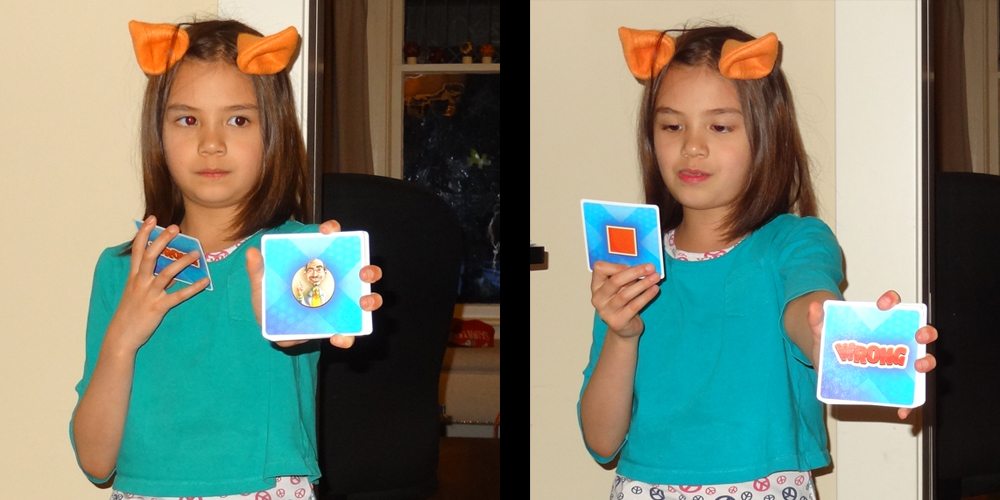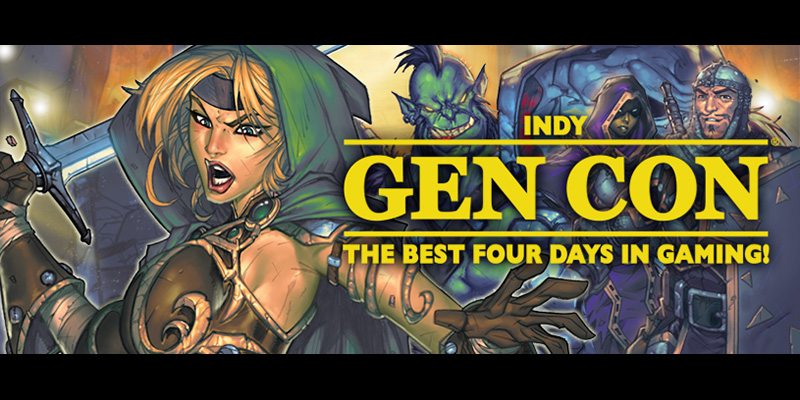
Disclosure: I got this product as part of an advertorial. ![]()
It used to be that trivia games were just an opportunity for a few players to show off their stores of knowledge on particular subjects: the more you know, the better your score. Players who pride themselves on their encyclopedic memories liked to play Trivial Pursuit, and people who couldn’t remember sports statistics or TV theme songs would rather play something else. In recent years, however, trivia games have thrown in other twists to level the playing field. For instance, in Wits and Wagers, you don’t have to know the right answer—you get points for knowing who has the right answer. People who don’t know all the answers now have a chance to compete, and trivia buffs can finally convince their friends to join them for a trivia game. Win-win, right?
Think Again! is a new game from Iello Games and Le Scorpion Masque that takes a different approach: the questions are really easy, drawing more from common knowledge than the obscure. The twist is, sometimes you have to give a wrong answer, so you can lose by being right.
At a glance: Think Again! is for 3 to 10 players, ages 10 and up, and takes about 20 minutes to play (though exact length depends on number of players). The retail price is $14.99. While the game itself can be played by younger players, there may still be some trivia questions that younger players just won’t know, like the nationality of Elton John or what country is known for comics, fries, chocolate, and beer.

Components:
The game comes with 50 question cards, and the rules are printed on 5 cards. Everything fits into a portable box with a magnetic closure.
Each card has six questions on one side (with answers). The backs have one of six things: the words “Right” or “Wrong,” a green circle or red square, or a genius or a dunce. The only thing I didn’t like about these were the genius/dunce illustrations because from a distance they’re hard to distinguish quickly, and the game is all about speed. The two cartoons are actually caricatures of the game designers, Bruno Cathala and Ludovic Maublanc, but they’re just a little too detailed and not iconic enough for gameplay.
How to play
The object is to score the most points, by giving the appropriate answers to the questions as quickly as possible. Each player will take a turn being the reader once, reading five questions. Once everyone has had a turn being reader, the game is over.

As reader, you look at the top card and pick a question to read, holding the rest of the deck so that the other players cannot see the back of the next card in the deck. As you finish the question, you turn the deck toward the players so that they can see the top card back. If it shows “Right,” a green circle, or the genius, then the players should give the right answer (printed below the question on the card). If it shows “Wrong,” a red square, or the dunce, then they need to give a wrong answer (any answer not shown on the card). There are also absurd questions like “How many full minutes are there in one second?” to which you must answer “Think Again!”
Whoever is the first to say an answer gets the card—however, you get points if you give the appropriate answer (right, wrong, or “Think Again!”), and you lose points if you give an inappropriate answer. The card is placed face up or face down to show whether it’s positive or negative points.
After each player has read five questions, then the game is over, and whoever has the most points wins.
The Verdict
Think Again! is a very simple concept, but it can put your brain in knots trying to be first to shout out a wrong answer to a question that you know. As with other games where you have to say things quickly, your brain freezes up and sometimes what comes out isn’t even a word. In this case, it’s very hard to prevent yourself from shouting out the correct answer.
For the most part, I did find that the questions were pretty obvious, though my kids did have trouble with some of them. But when playing with my kids, it was pretty easy to pick questions that I was reasonably sure they’d know—after all, the important thing was whether they could switch between right and wrong answers quickly.
I will say that our group did figure out one strategy that seemed to work for the “wrong” answers, and we thought we might have to come up with a house rule to fix it: a few players (myself included) would just pick a random word like “cheese” and shout it whenever we needed a wrong answer—it avoids the short-circuiting that happens in your brain when you’re trying to think of a wrong answer quickly. Of course, the question reader could just switch to reading the absurd questions so we have to say “Think Again,” but that doesn’t solve the problem entirely. The house rule would be that you couldn’t use the same wrong answer twice … but then you’d have to keep track of that as well.
Think Again! may not appeal as much to real trivia buffs because there’s nothing really obscure, but if you like the challenge of being first to answer (regardless of the difficulty of the question) then it’ll scratch that itch. It’s small enough that you can pack it easily for playing on the go, and at fifteen bucks it’s not a huge investment. If you play it a lot you may start to remember the questions, but because the right/wrong choice is determined by the next card in the deck, that’s always randomized and can change up the game.
You can pick up Think Again! from Iello Games, Amazon, or check your local game store.
Disclosure: GeekDad received a copy of Think Again through Tomoson.com. Opinions expressed are my own.



